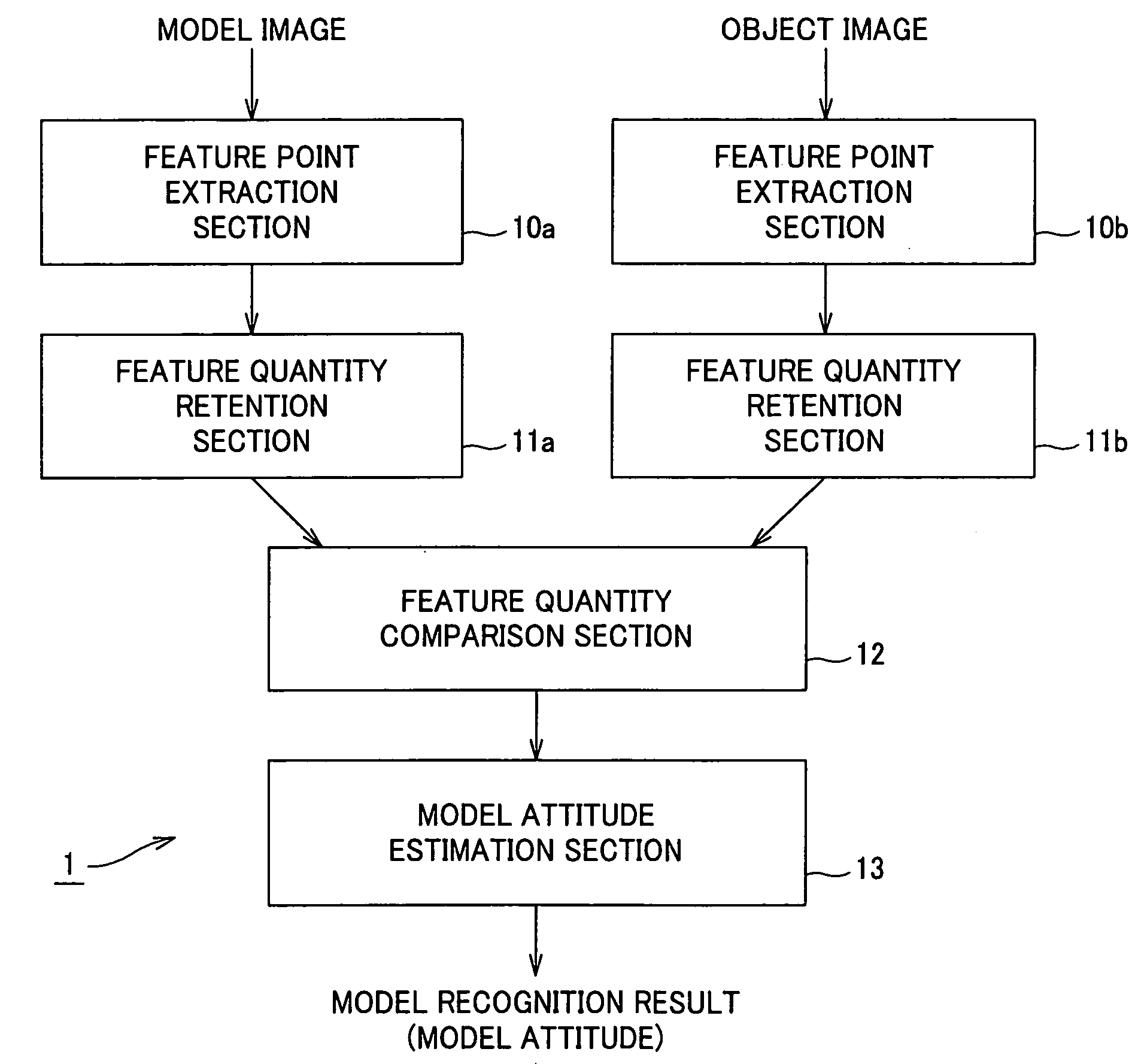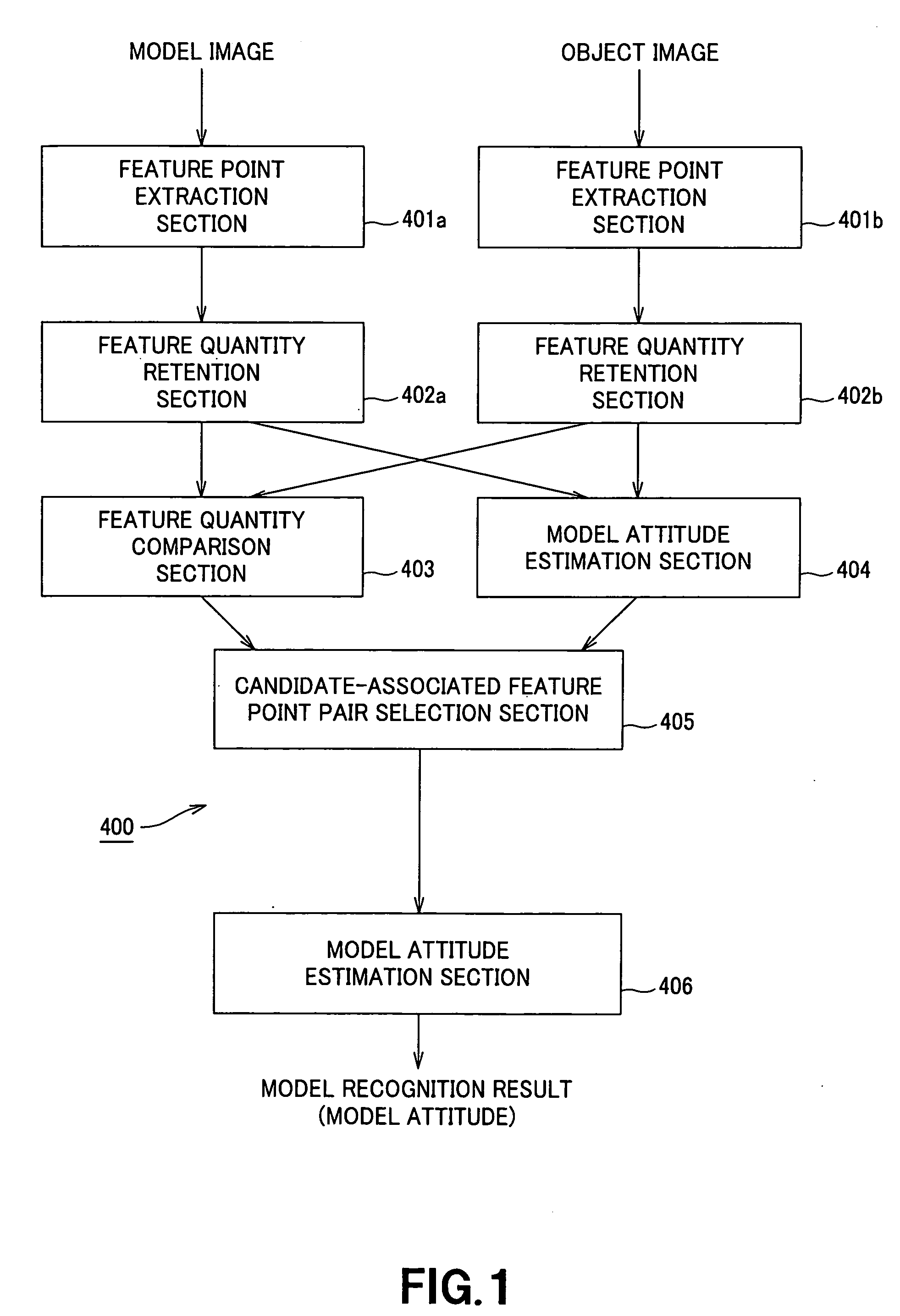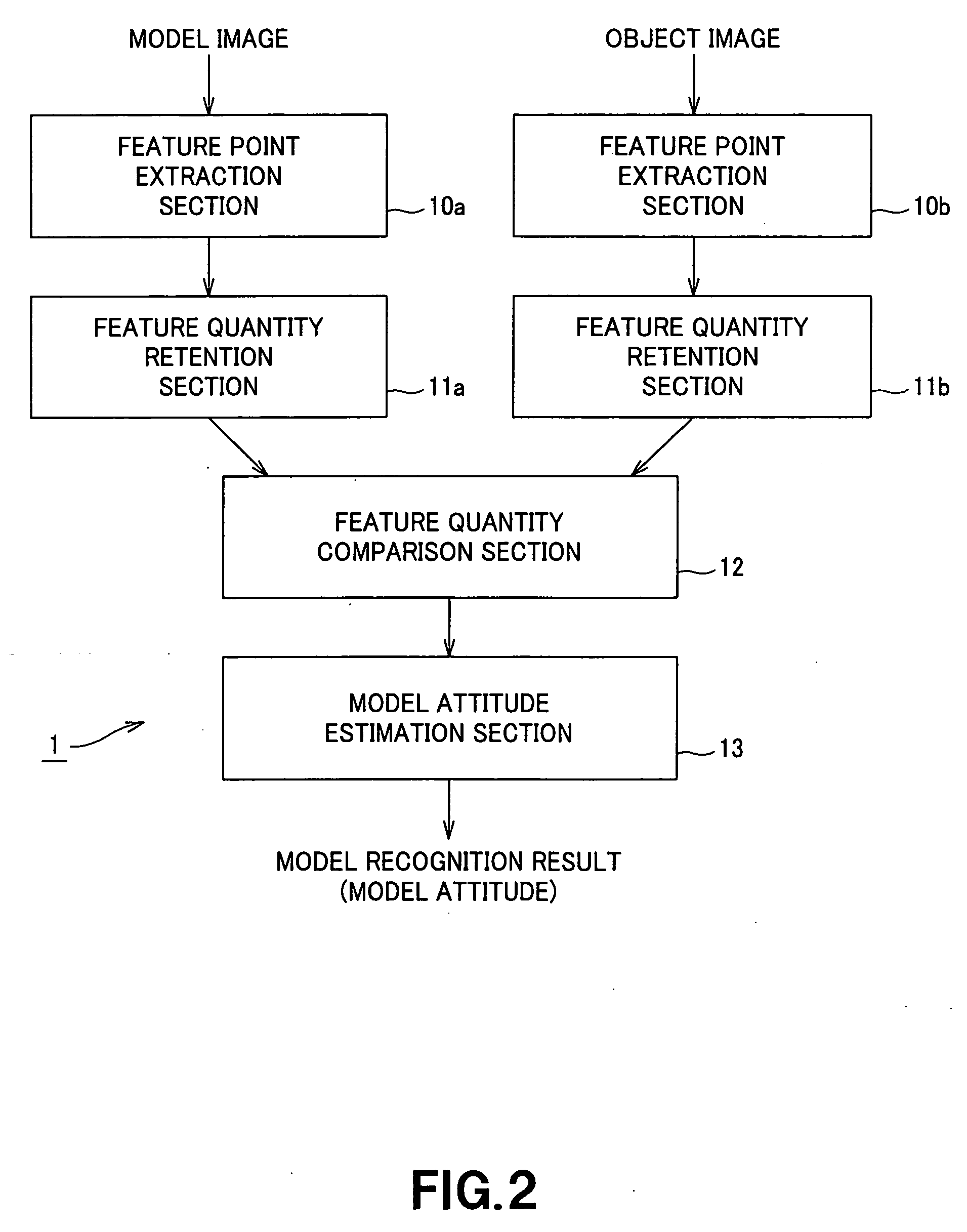Image recognition device and method, and robot device
a robot device and image recognition technology, applied in the field of image recognition apparatus, can solve the problems of difficult to provide high-quality representation of object shapes in input images, ineffective environment recognition of objects from ordinary images, and difficult recognition, etc., to achieve the effect of stably detecting objects
- Summary
- Abstract
- Description
- Claims
- Application Information
AI Technical Summary
Benefits of technology
Problems solved by technology
Method used
Image
Examples
Embodiment Construction
[0041] An embodiment of the present invention will be described in further detail with reference to the accompanying drawings. The embodiment is an application of the present invention to an image recognition apparatus that compares an object image as an input image containing a plurality of objects with a model image containing a model to be detected and extracts the model from the object image.
[0042]FIG. 2 shows the schematic configuration of an image recognition apparatus according to an embodiment. In an image recognition apparatus 1 of FIG. 2, feature point extraction sections 10a and 10b extract model feature points and object feature points from a model image and an object image. Feature quantity retention sections 11a and 11b extract a feature quantity for each of the extracted feature points and retain them along with positional information of the feature points. A feature quantity comparison section 12 compares the feature quantity of each model feature point with that of...
PUM
 Login to View More
Login to View More Abstract
Description
Claims
Application Information
 Login to View More
Login to View More - R&D
- Intellectual Property
- Life Sciences
- Materials
- Tech Scout
- Unparalleled Data Quality
- Higher Quality Content
- 60% Fewer Hallucinations
Browse by: Latest US Patents, China's latest patents, Technical Efficacy Thesaurus, Application Domain, Technology Topic, Popular Technical Reports.
© 2025 PatSnap. All rights reserved.Legal|Privacy policy|Modern Slavery Act Transparency Statement|Sitemap|About US| Contact US: help@patsnap.com



